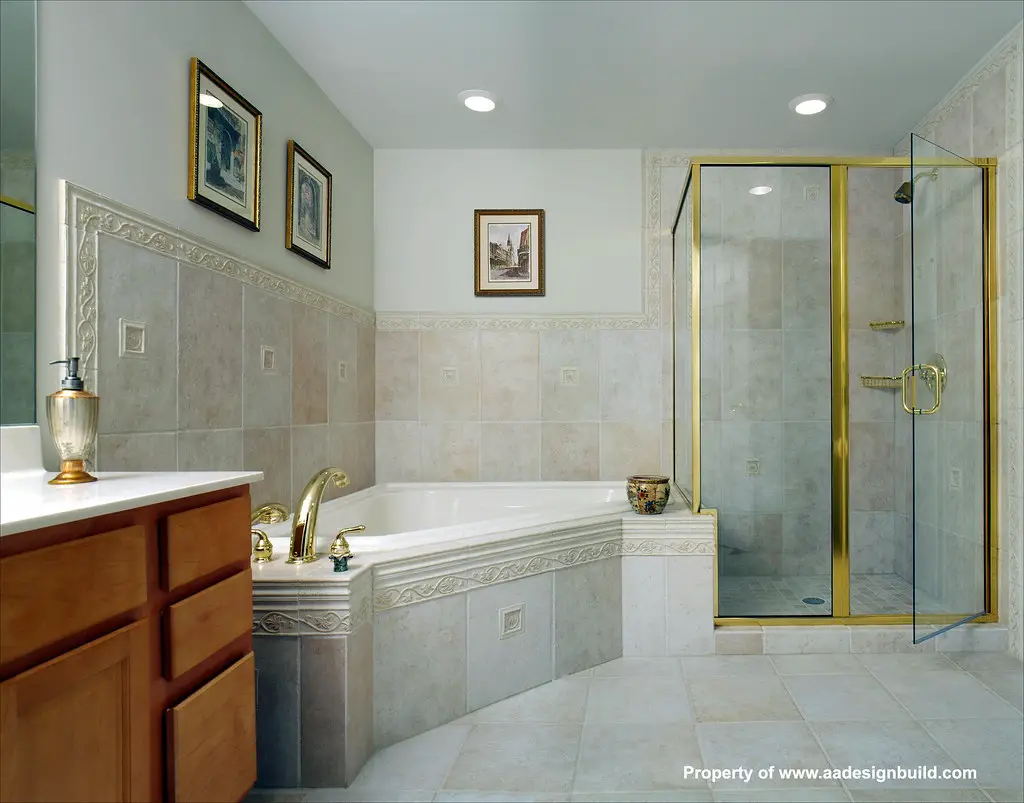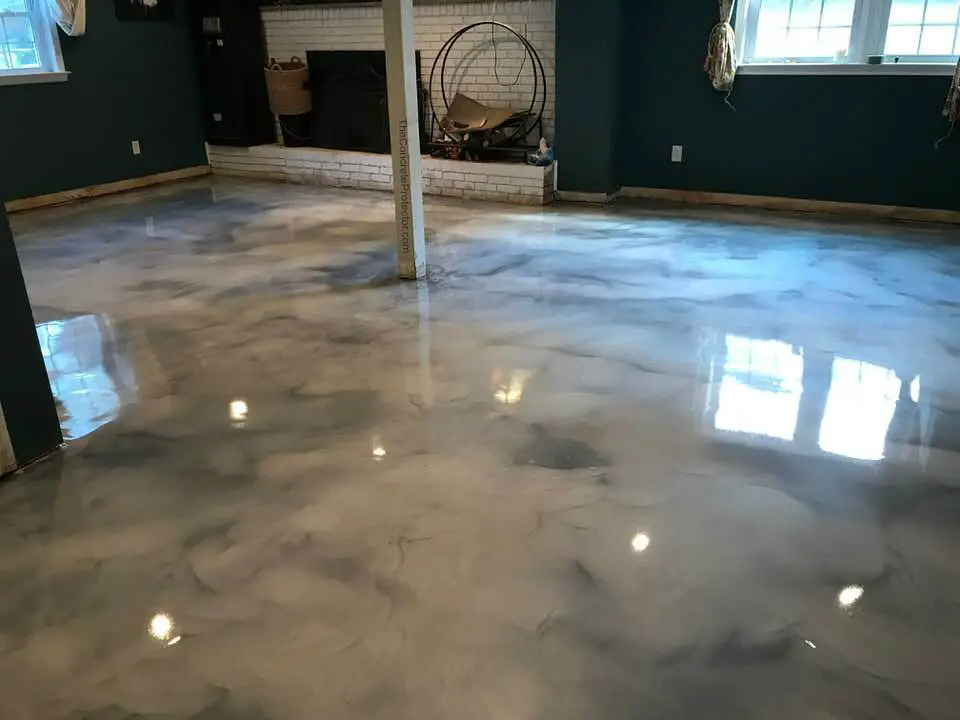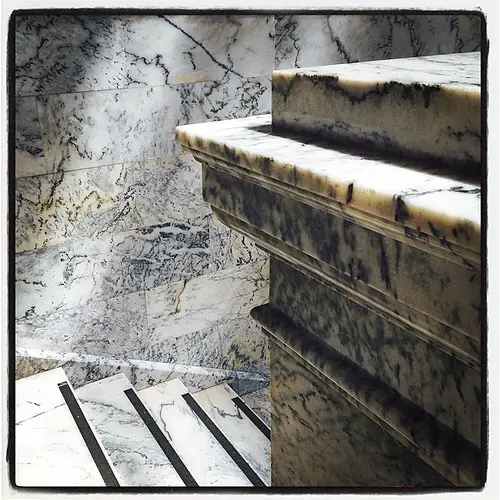Introduction
Marbling is the technique of creating the illusion of swirling, multicolored patterns on a surface, imitating the natural stone known as marble. This technique has been around for centuries and was first used in ancient times by the Romans and Greeks.
The popularity of marbling continued throughout history, especially during the Renaissance era when it was used to decorate buildings and churches. Today, marbling is a popular interior design trend that adds elegance and sophistication to any room.
Definition of Marbling
Marble is prized for its natural beauty, durability, and versatility in use. However, it can be expensive to use real marble in your home due to its cost and weight.
Marbling provides an affordable alternative by mimicking the look of marble through paint or wallpaper applications. The technique involves creating a base color layer on a surface such as walls or floors before applying multiple layers of different colored paints or glazes with specialized tools such as combs or brushes, creating unique patterns.
The History of Marbling
The art of marbling dates back thousands of years with evidence found in various cultures throughout history. In ancient times, Greeks and Romans used marbling techniques on their sculptures and buildings’ columns to create an illusion of luxury through various hues carved into white marble blocks.

During medieval times, marbled paper became popular in Europe’s book-making industry as books were believed symbols of wealth for educated elites who bought fine leather-bound copies printed on ornamental paper. In contemporary times, we continue using marbled techniques to beautify our living spaces from kitchen counters to bathroom sinks with unique colors like pink or green embedded onto them.
The Importance Of Marbling In Interior Design
Marble has always been associated with grandeur and luxurious beauty because of its rarity and costliness during earlier centuries. However, today’s technology makes marbling accessible to everyone.
Marbled surfaces have become an important aspect of interior design, and it is used to add style and sophistication to any room. Marbling can transform ordinary surfaces such as floors, walls, countertops, and fireplaces into exquisite works of art.
It allows for the creation of unique designs that reflect the homeowner’s personal style while adding elegance and texture to any space. With marbling techniques, you can create a timeless ambiance that adds value to your home.
Marbled Locations in the Living Room
The living room is the heart of a home where we relax and entertain guests. It is also a space where we showcase our taste in interior decor.
Adding marbled elements to your living room can create a luxurious atmosphere and give your guests an unforgettable experience. Here are some marbled locations that you can include in your living room.
Marbled Fireplace Mantels
One of the most popular locations to add marble accents in the living room is the fireplace mantel. A marbled fireplace mantel adds elegance and sophistication to any living room, making it an excellent focal point for visitors. Whether you have a traditional or modern style, there are many options available for marbling your fireplace mantel.
You can choose from various types of marble, including Carrara, Calacatta, or Nero Marquina, each with its unique color and veining pattern. You may also consider adding accent lighting above the mantle to highlight the veins and add depth to the overall look.
Marbled Coffee Tables and End Tables
Another great way to incorporate marble into your living room is by using coffee tables and end tables made out of this luxury material. The beauty of using these kinds of tables is that they are both practical and pretty at the same time.
The natural stone offers exceptional durability against scratches or spills while providing a gorgeous ambiance that never goes out of style. You can choose from different shades such as white, black, green or beige depending on the décor style you’re going for in your home.
Marbled Accent Walls
For those looking for a more dramatic statement piece than just furniture pieces, adding an accent wall with marble will surely impress guests when they walk into your home! An accent wall covered in natural stone adds texture as well as color variation which helps break up solid-colored walls. You can choose to create a full-wall accent or use it as an architectural feature such as a fireplace surround or niche with floating shelves.
The possibilities are endless when it comes to using marbled walls in your home! Be sure to consult with a professional before starting any renovation projects to ensure the best possible outcome.
Marbled Locations in the Kitchen
The kitchen is often referred to as the heart of the home, and it is the room where you spend most of your time cooking. Therefore, it is vital to make this space look good, and marbling can add a luxurious touch to your kitchen’s design. Here are some ideas for marbled locations in your kitchen.

Marbled Countertops and Backsplashes
Countertops and backsplashes can be made from a wide range of materials such as quartz, granite or wood. However, marble countertops and backsplashes have become increasingly popular over the years because of their durability and unique beauty. Marble countertops come in different colors ranging from white to black with varying degrees of veining.
Before installing a marble countertop, ensure that it is sealed correctly to prevent stains from acidic substances like wine or vinegar. A backsplash made from the same marble slabs used for countertops creates a cohesive look in any style kitchen- classic or modern.
Marbled Kitchen Islands
Kitchen islands provide extra workspace for cooking preparation, dining tables or an area for social gatherings when hosting guests. Having a marbled countertop on an island adds elegance and sophistication to any home’s kitchen design.
A large kitchen island typically requires more square footage; therefore, more material will be required than using only marble as an accent feature. Consider investing in high-quality marble that can withstand daily use without dulling its shine or developing scratches.
Marbled Flooring
If you want to add depth and dimension to your flooring, consider adding marbling patterns that match other elements of your kitchen’s design such as countertops or backsplashes. Marble flooring comes in various styles such as tiles or slabs with different finishes such as polished or honed. Keep in mind that marble flooring is susceptible to damage from heavy traffic, spills, and stains.
Proper maintenance includes regular sweeping or vacuuming and avoiding harsh cleaners that can erode its surface. Invest in professional sealing services to prevent water damage, stains, and scratches.
Marble is a beautiful and functional material to use in the kitchen when installed correctly and maintained regularly. Try using it in countertops, backsplashes, kitchen islands or flooring to add texture, depth and elegance that will last for years to come.
Marbled Locations in the Bathroom
The bathroom is one of the most important areas in the house, and it’s one that can benefit greatly from the addition of marble. Marble provides a luxurious and elegant look that can enhance the beauty and value of any home. Here are a few ways you can incorporate marble into your bathroom design:
Marbled Shower Walls and Floors
Marble is an excellent material for shower walls and floors because it is durable, waterproof, and easy to clean. It also looks stunning when paired with glass or stainless steel fixtures. You have many options when it comes to choosing a marble pattern for your shower, including classic veined patterns or more modern geometric designs.
To ensure that your marble shower walls and floors maintain their beauty over time, it’s important to keep them clean and dry. Use a squeegee or towel to remove excess water after each use, and avoid using harsh chemicals or abrasive cleaning tools that could damage the surface of the marble.
Marbled Bathroom Vanities
A marbled bathroom vanity adds an air of sophistication to any bathroom. The natural veining in marble creates a unique pattern on each piece, making every vanity one-of-a-kind.
You can choose from a variety of colors and patterns to match your existing decor or create a bold statement piece. When choosing a marbled vanity top, consider factors like durability and maintenance requirements.
Marble is susceptible to staining from certain substances like red wine or citrus juice, so be sure to wipe up any spills immediately. Also, avoid using acidic cleaners like vinegar which could etch the surface of the stone.
Marbled Bathtub Surrounds
Adding a marbled bathtub surround is another way to incorporate this timeless material into your bathroom design. The smooth surface of marble provides an ideal backdrop for relaxing baths while creating an elegant focal point in the room.
You can choose from a variety of colors and patterns, from classic white Carrara to bold black Nero Marquina. To protect your marble bathtub surround, be sure to wipe up any spills immediately and avoid using abrasive cleaners that could scratch or dull the surface.
Sealant may also be necessary to prevent water damage over time. With proper care, a marbled bathtub surround will provide both beauty and functionality for years to come.
Unique and Rarely Known Uses of Marble in the House
Marble Staircase Steps: A Touch of Elegance
While marble is commonly used for flooring, it can also be used to create staircase steps that exude elegance and sophistication. Using marble for staircase steps will create a grand entrance to your home.
Marble can come in various colors, including white, grey, black, green, and even pink. With so many options available, you are sure to find a color that complements your home’s interior design.
Marble staircase steps are highly durable and long-lasting. They can withstand heavy foot traffic without showing signs of wear and tear.
The only downside of using marble for staircase steps is that it can be slippery when wet. To prevent accidents from happening, consider using a non-slip coating or installing stair treads made from materials like carpet or rubber.
Marble Bookshelves or Display Cases: A Unique Twist on Traditional Furniture
Bookshelves or display cases made from marble provide a unique twist on traditional furniture pieces. They are not only functional but also add an element of luxury to any room they are placed in. When deciding on the placement of a marble bookshelf or display case, consider putting it against an accent wall with recessed lighting to showcase its beauty fully.
Marble bookshelves and display cases come in various shapes and sizes, making them perfect for displaying collectibles or family heirlooms. Keep in mind that while bookshelves or display cases made from marble are elegant furniture pieces; they require regular maintenance to maintain their shine over time.

Marble Planters or Vases: Bringing Nature Indoors
If you’re looking for unique ways to bring nature into your home’s interior design scheme, consider using marble planters or vases as decorative elements. Marble provides an excellent backdrop for greenery, and its natural color complements the vibrant hues of beautiful flowers. Marble planters are perfect for indoor gardens and can be used to grow a variety of plants, including succulents, herbs, or even small trees.
Marble vases come in various shapes and sizes and can be used to display fresh flowers or faux arrangements. Marble planters or vases require regular maintenance to keep them looking their best.
Be sure to wipe off water stains immediately as they can leave permanent marks on the marble surface. When using marble planters or vases outdoors, make sure to bring them indoors during harsh weather conditions to prevent damage.
Maintenance Tips for Marble Surfaces
Marble surfaces are an excellent addition to any home due to their unique beauty and durability. However, they require proper maintenance for them to maintain their luster and shine. Here are some maintenance tips that will ensure that your marble surfaces look great for years to come.
Proper Cleaning Techniques
Marble is a porous material, meaning it can easily attract dirt, dust, and other particles if not properly cleaned. So, it’s essential to avoid using harsh chemicals that can damage the surface of the marble.
Instead, use a damp cloth or sponge with warm water to clean the surface of the marble. For tougher stains or spills like red wine or coffee on the countertop or floor, mix baking soda with warm water until you get a paste then rub gently onto the stain until it disappears.
Avoid using acidic cleaners like vinegar or lemon juice as they can dissolve your marble’s polished finish, leaving it dull over time. Additionally, do not use abrasive cleaning pads like steel wool as they may scratch your marble surface and cause permanent damage.
Seal Your Marble Surface
Marble is susceptible to staining due to its porous nature; thus sealing your marble surface is crucial in ensuring its longevity. A sealer forms a protective barrier between the pores of your surface and any liquid spilled on top of it.
It also provides a layer of protection from scratches and scuffs from daily wear and tear. Ideally, you should seal your marble every six months if used frequently; otherwise, every year should suffice.
To seal your marble correctly: Start by cleaning the surface thoroughly using warm water then dry it completely before application- apply sealer sparingly with a soft brush then let it sit for five minutes before wiping off excess with a clean cloth. By following these maintenance tips regularly, you will keep your home’s marbled surfaces looking beautiful and shining for many years to come.
Conclusion
Marble is a timeless and elegant material that has been used for centuries in interior design. It adds a luxurious touch to any room and elevates the overall aesthetic of your home. From marbled fireplace mantels to marbled shower walls, there are countless ways to incorporate this beautiful stone into your living spaces.
In the living room, marbling can be used on coffee tables, end tables, and accent walls to create a sophisticated atmosphere. In the kitchen, marble countertops and backsplashes can add an element of luxury while also being durable and easy to clean.
In the bathroom, marbled surfaces provide a spa-like experience that promotes relaxation and comfort. However, it is important to note that marble requires special care when it comes to maintenance.
To keep its luster and shine intact, regular cleaning with non-abrasive materials is necessary. Avoid using acidic or abrasive cleaners as they can damage the surface over time.
Overall, incorporating marbling into your home can be a worthwhile investment that adds value both aesthetically and functionally. With proper care, these surfaces will last for years to come and continue to impress guests with their beauty and sophistication.

